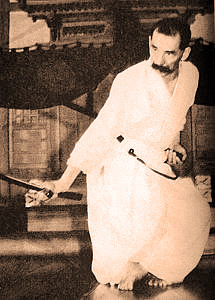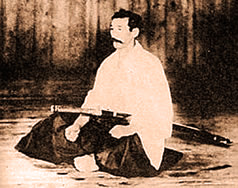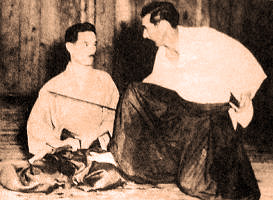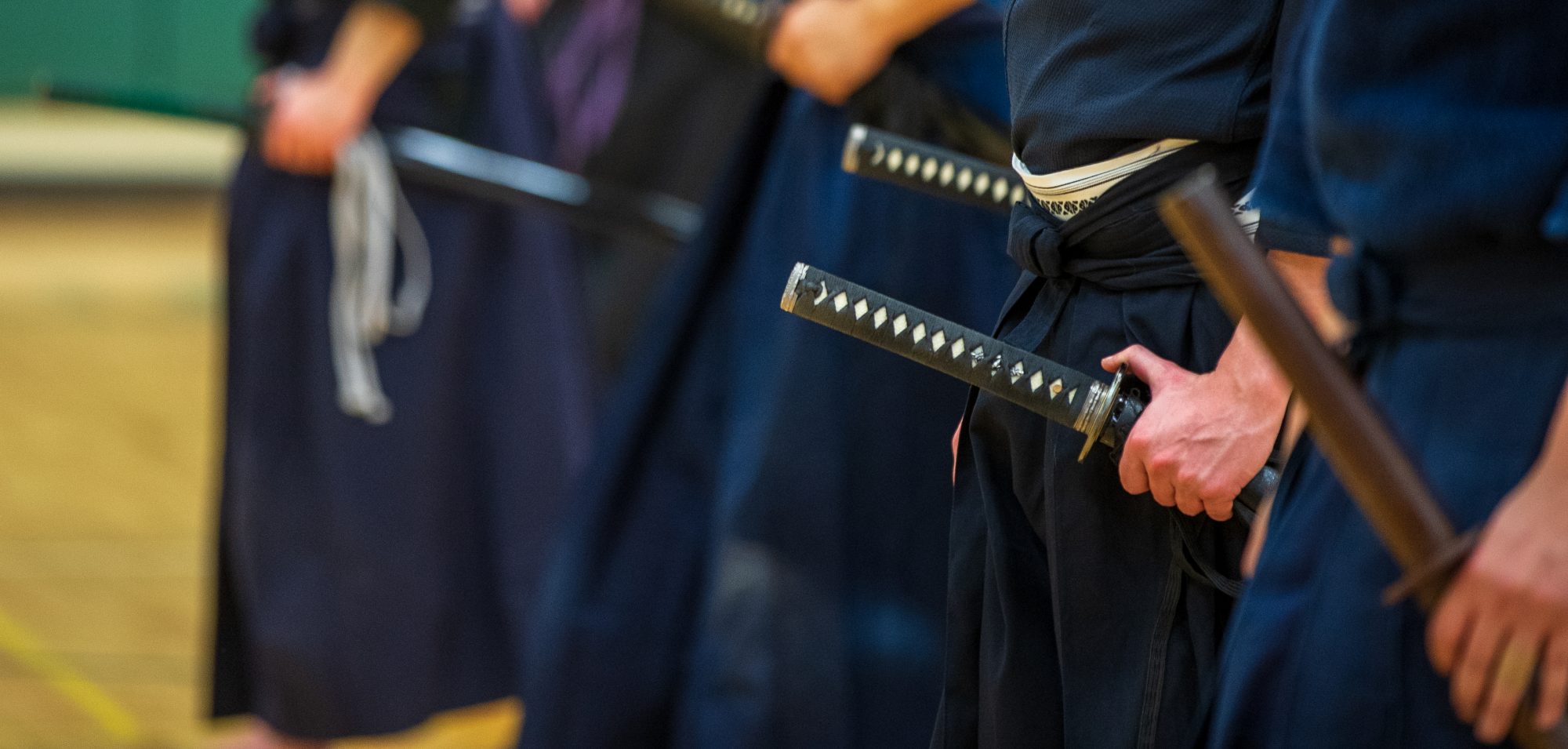Dojo Guides
Below are some guides our dojo has curated ourselves over the years for various purposes.
| Dojo Documents | Size |
|---|---|
| DFWKIK Beginner’s Guide | 472 KB |
| The Shinai | 157 KB |
| Yuko Datotsu | 36.3 KB |
| Bokuto Ni Yoru Kendo Kihon.pdf | 134.37 KB |
| DFWKIK Iaido Kihon | 23.7 KB |
| DFWKIK Iaido Warm Ups | 16.6 KB |
Official Guides
Official english translated All Japan Kendo Federation Manuals can be purchased on this page.
Kendo 剣道
Below are some kendo terms as they pertain to various areas of practice.
Reigi 礼儀
Terms relating to kendo etiquette.
- ki o tsuke 気をつけ
Attention - chakuza 着座
Be seated / take a seat (in seiza) - seiza 正座
seated kneeling position, sitting on the soles of your feet - shoumen ni 正面に
Face the Shoumen (front of the dojo) - sensei ni 先生に
Towards sensei (Instructors) - otagai ni お互いに
Towards eachother - rei 礼
Bow - onegai shimasu お願いします
Please – said with sincerity to beseech each other for an earnest practice - arigatou gozaimashita ありがとうございました
Thank you – said with sincerity to thank each other for practice
Basic Strikes
Terms relating to the main striking areas, and the execution of a strike.
- men 面
A strike to the top of the head - kote 小手
A strike to the foremost wrist - dou 胴
A strike to the torso - tsuki 突き
A stab to the throat area - seme 攻め
Pressure – A concept that entails all facets of overcoming your opponent - kiai 気合
A type of yell or shout meant to show one’s spirit - ki ken tai icchi 気剣体一致
Performing a strike with the spirit (kiai), body, and sword unified in one motion - zanshin 残心
A continuing presence maintained after a strike - kiri kaeshi 切り返し
A series of men strikes performed as a basic drill
Suburi 素振り
Terms related to swinging the shinai.
- sonkyou 蹲踞
A squatting position taken before and after initiating keiko - nuketou 抜け刀
“Drawing” the shinai out from your hip - jouge buri 上下振り
Large straight swings meant to loosen the arms/shoulders - naname buri 斜め振り
Large angled swings meant to loosen the arms/shoulders - matawari 股割り
A wide squatting stance meant to train the legs during suburi - zenshin kotai 前進後退
Back and forth swinging - shoumen uchi 正面打ち
Straight swings to the men - sayuumen uchi 左右面打ち
Angled swings to the men - yonkyodomen 四挙動面
“4 step men” – as the leader calls out step forward once, strike men, step back twice - shinkokyuu 深呼吸
Deep sequential breathing - osametou 収め刀
Return the shinai to your hip
Ashisabaki 足さばき
Terms relating to the various footwork.
- suri ashi すり足
The sliding motion of one’s feet used in all the various footwork - ayumi ashi 歩み足
Moving along the floor by alternating one’s feet in front of the other - okuri ashi 送り足
Moving along the floor by “sending” one’s foot out – front and back feet do not switch - hiraki ashi 開き足
An “opening”/diagonal step meant counter an incoming strike from an opponent - fumikomi ashi 踏み込み足
A forward stepping of the right foot, in most cases with the stomping motion, coordinated with the strike of one’s shinai - tsugi ashi 継ぎ足
An advanced footwork where one subtly moves their back foot up before striking
Keiko 稽古
- mawari keiko 回り稽古
Rotational practice – after each drill/keiko, we step to the side to face a new partner - jigeiko 地稽古
Free practice – each kenshi practices with whoever they like
Advanced
Terms relating to more advanced practice techniques or concepts.
- sutemi 捨て身
attack with no regard to self - ichibyoshi 一拍子
one beat/breath
Iaido 居合道
Below are lists of kata and brief explanation for various sets, both basic and advanced.
Seitei Iai
Zen Nippon Kendo Renmei Seitei Iai 全日本剣道連盟居合
Basic Standardized kata set by the All Japan Kendo Federation.
Example Video (YouTube)
- Mae 前
Front – Commencing from a kneeling position, forestalling a frontal attack - Ushiro 後ろ
Rear – Commencing from a kneeling position, forestalling an attack from the rear - Ukenagashi 受け流し
Receive, Parry and Cut – Commencing from a kneeling position, parrying an attack from the left - Tsuka-ate 柄当て
Striking with the Hilt – Commencing from a raised knee, seated position, forestalling two attackers, front and rear - Kesagiri 袈裟切り
Diagonal Cut – Commencing from a standing position, forestalling an approaching attacker - Morote-zuki 諸手突き
Two-Hand Thrust – Commencing from a standing position, forestalling three approaching attackers, two in front and one behind - Sanpōgiri 三方切り
Three Direction Cut – Commencing from a standing position, forestalling three approaching attackers, one each to the right, left and front - Ganmen-ate 顔面当て
Hit to the Face – Commencing from a standing position, forestalling two approaching attackers, front and rear - Soete-zuki 添え手突き
Joined Hand Thrust – Commencing from a standing position, forestalling an attack from the left - Shihōgiri 四方切り
Four Direction Cutting – Commencing from a standing position, forestalling four approaching attackers - Sōgiri 総切り
Complete Cuts – Five different and complete cuts. Commencing from a standing position - Nukiuchi 抜き打ち
Sudden Draw – Avoid, then respond to an attack from the front. Commencing from a standing position
Muso Shinden Ryu 夢想神伝流:
“Old style” kata performed as advanced kata sets.

Shoden 初伝
aka OmoriRyu 大森流
Example Video (YouTube)
- Shohattō 初発刀
Also called Mae 前 – cut to the front - Satō 左刀
Also called Hidari 左 – cut to the left - Utō 右刀
Also called Migi 右 – cut to the right - Ataritō 当刀
Also called Ushiro 後 – cut to the rear - In’yō Shintai 陰陽進退
Also called Yaegaki 八重垣 – dealing with two enemies, yin and yang retreat - Ryūtō 流刀
Also called Ukenagashi 受流し – men block then cut to opponent as he passes, cut the opponent’s saya and side of the abdomen - Juntō 順刀
Also called Kaishaku 介錯 – Seppuku assistant not for public demonstration - Gyakutō 逆刀
Also called Tsukekomi 附込 – men block while looking up at the opponent, deep men cut, todome thrust - Seichūtō 勢中刀
Also called Tsukikage 月影 – elbow cut - Korantō 虎乱刀
Also called Oikaze 追風 = walking cut - Battō 抜刀
Also called Nukiuchi 抜打 – cut from seiza - In’yō Shintai Kaewaza 陰陽進退替手
Also called Sunegakoi 脛囲 – yin and yang retreat exchange movement; only one opponent

Chuden 中伝
aka Hasegawa EishinRyu 長谷川英信流
Example Video (YouTube)
- Yokogumo 横雲
horizontal clouds - Toraissoku 虎一足
tiger’s one step - Inazuma 稲妻
thunder rolls - Ukigumo 浮雲
floating clouds - Yamaoroshi 山颪
downhill storm - Iwanami 岩浪
waves against the rocks - Urokogaeshi 鱗返
scaling off - Namigaeshi 浪返
backwash waves - Takiotoshi 滝落
waterfalls - Nukiuchi 抜打
sudden attack; also called Joi-uti (punishment ordered by the boss), a very common assassinating technique.

Okuden 奥伝 – Sitting in Tatehiza 立て膝
- Kasumi 霞
mist or rainbow – one man sitting in front of you, continuous cuts - Sunegakoi 脛囲
knee covering – block your knee first, then cut - Shihogiri 四方切
attacking the enemies coming from four directions – first a stab, then cuts - Todume 户詰
two men sitting before you, cut them one by one - Towaki 户脇
one is behind and another is in front of you. first attack the behind and then front. - Tanashita 棚下
hide yourself under a hovel, crawl out, then attack. - Ryodume 両詰
similar to Tanashita, first a stab, then cut - Torabashiri 虎走
tiger run – stand up, run forward in quick small steps and cut, run backward in quick small steps and cut
Okuden 奥伝 – Standing Forms 立業
- Ikidure/Yukidure/Yukitsure 1 行連1 – going side by side (Escort)
There are two men in the both side you, walking together. Maybe you are arrested by them, trying to escape. Ikidure/Yukidure/Yukitsure 2(行連2)variations of ikidure/yukidure 1. - Turedati 連達
going together. (Escort) There are one in front right and the other back left. stab the back left one then cut the front right - Somakuri 惣捲
sougiri in seitei iai was based on this; continuous attack, wind sword around to smash surrounding enemies - Sodome 総留
enemies are coming towards on a narrow path; continuous one-hand cuts - Shinobu 信夫
also called Yami-uti (attack in the darkness); approach your victim from his behind in the dark, slowly, quietly, use the tip of the sword to tap on the ground to divert his attention, then strike from the opposite side - Ikitigai/Yukichigai 行違
two persons coming towards in a row, first strike the front, stab the behind, then cut the front - Sodesurigaeshi 袖摺返
nemy behind a crowd, draw your sword, push away the crowd using your elbows and cut the target - Mon-iri 門入
nter the gate, lower yourself, stab the first coming one with great power one-hand, then cut the behind and front ones - Kabezoi 壁添
opponent by a wall, cut with sword up and down within the limited space - Ukenagashi 受流
receive and redirect opponent’s attack
Okuden 奥伝 – Seiza Forms 正座
- Itomagoi 1 暇乞 1 – farewell 1
while saying good bye by bowing, suddenly draw out your sword, then swing it vertically onto the opponent’s head, smash at one stroke, before he notices what happens. Farewells are supposed to be a modification of Nukiuchi. Farewell 1 bow slightly by lowering your head only and draw sword immediately using both hands - Itomagoi 2 暇乞 2 – farewell 2
bow deeper by two hands touching the ground briefly then draw the sword the second right hand fingers touch the ground - Itomagoi 3 暇乞 3 – farewell 3
bow deepest with hands on the ground and head down; this will hide your sword drawing action from your opponent
